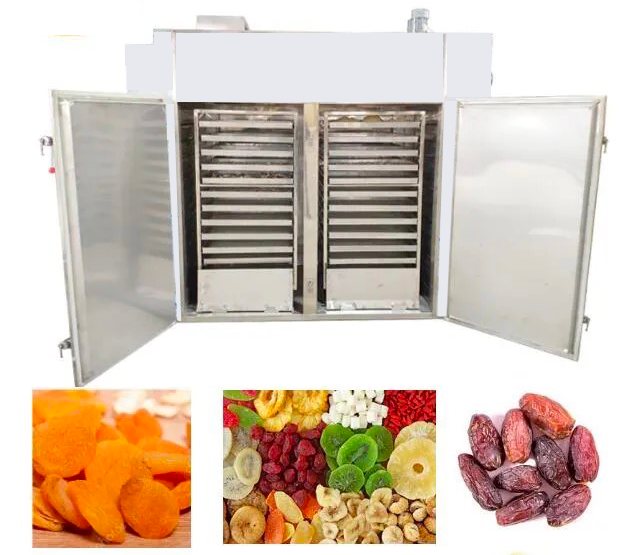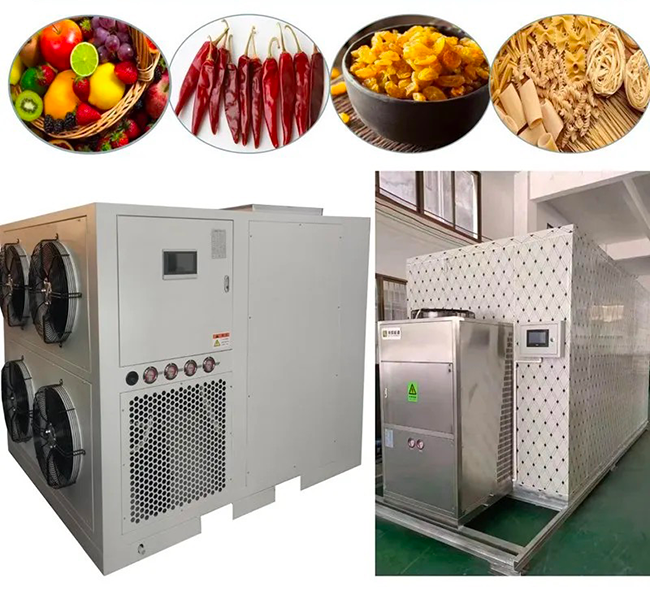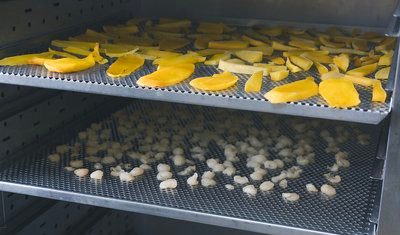
Content Menu
● Introduction
>> Understanding Heat Pump Dryers
● How Do Heat Pump Dryers Work?
● Benefits of Heat Pump Dryers
● Applications in Food Processing
● Is Wall Mounting Safe?
● Installation Guidelines
● Advantages of Wall Mounting
● Suggested Visuals
● Conclusion
● Frequently Asked Questions (FAQ)
>> 1. What types of foods can be dried using heat pump dryers?
>> 2. How does wall mounting affect dryer performance?
>> 3. Are heat pump dryers more expensive than traditional dryers?
>> 4. Can I install a heat pump dryer myself?
>> 5. How often should I maintain my heat pump dryer?
Introduction
In the world of food processing, drying is a crucial step that enhances shelf life and preserves flavor. As a manufacturer of food dryers, we understand the importance of efficient drying methods. One innovative solution gaining popularity is the heat pump dryer, which offers energy efficiency and effective moisture removal. This article will explore the safety and practicality of mounting heat pump dryers on walls, along with insights into their functionality, benefits, and best practices.

Understanding Heat Pump Dryers
Heat pump dryers operate on a unique principle that sets them apart from traditional drying methods. They utilize a closed-loop system to extract moisture from food while recycling heat within the system. This not only conserves energy but also maintains a consistent drying temperature, which is essential for preserving the quality of food.
How Do Heat Pump Dryers Work?
- Heat Exchange Process: The dryer draws in air from the surrounding environment. This air is then heated using a compressor and passed through the food items.
- Moisture Removal: As the warm air circulates, it absorbs moisture from the food. The now humid air is directed to an evaporator where it cools down, causing the moisture to condense and be collected.
- Recycling Heat: The cooled air is reheated and cycled back into the drying chamber, making the process highly efficient.
Benefits of Heat Pump Dryers
- Energy Efficiency: Heat pump dryers consume significantly less energy compared to conventional dryers. They can reduce energy costs by up to 50%, making them an economical choice for large-scale food processing operations.
- Temperature Control: They provide precise temperature control, which is vital for sensitive food products. Maintaining lower temperatures helps in preserving nutrients and flavors that might be lost in traditional high-temperature drying methods.
- Versatility: Suitable for a wide range of foods including fruits, vegetables, meats, and herbs. This versatility allows manufacturers to diversify their product offerings without investing in multiple drying systems.
- Environmentally Friendly: By using less energy and reducing waste, heat pump dryers are a sustainable choice for food processing. They produce minimal emissions compared to gas or electric dryers.
Applications in Food Processing
Heat pump dryers are increasingly being used across various sectors of the food industry:
- Fruit Drying: Fruits like apples, bananas, and berries retain their color and flavor better when dried with heat pump technology.
- Vegetable Drying: Vegetables such as carrots, peas, and tomatoes can be dried effectively while maintaining their nutritional value.
- Herb Drying: Delicate herbs benefit from controlled drying conditions that prevent browning and loss of essential oils.
- Meat Drying: For products like jerky, heat pump dryers ensure even drying without cooking the meat, preserving texture and taste.

Is Wall Mounting Safe?
Mounting a heat pump dryer on the wall can be safe if done correctly. Here are some considerations:
- Weight Capacity: Ensure that the wall can support the weight of the dryer. Most heat pump dryers are designed to be lightweight but still require proper mounting hardware.
- Vibration Control: Wall-mounted units may experience vibrations during operation. Proper installation can mitigate these effects and prevent damage to both the unit and the wall.
- Accessibility: Consider ease of access for loading and unloading food items. A wall-mounted dryer should be at a comfortable height for users.
Installation Guidelines
1. Choose the Right Location: Select a sturdy wall away from direct sunlight or moisture sources. Avoid areas with high humidity or extreme temperatures that could affect performance.
2. Use Quality Mounting Hardware: Invest in high-quality brackets and anchors designed for heavy appliances. Stainless steel or heavy-duty plastic mounts are recommended for durability.
3. Follow Manufacturer Instructions: Adhere strictly to installation guidelines provided by the manufacturer for optimal safety. This includes correct electrical connections and ensuring proper airflow around the unit.
4. Check Electrical Connections: Ensure that electrical connections are secure and comply with local regulations. Consult a licensed electrician if necessary to avoid safety hazards.
5. Regular Maintenance: Schedule regular checks to ensure that all components are functioning correctly and securely mounted. Inspect for any signs of wear or damage that could compromise safety.
Advantages of Wall Mounting
Mounting heat pump dryers on walls can offer several advantages:
- Space-Saving Design: Wall mounting frees up floor space, allowing for better utilization of available areas in production facilities.
- Improved Airflow: Elevating the dryer can enhance airflow around the unit, improving efficiency during operation.
- Ease of Cleaning: With more space underneath, cleaning around the unit becomes easier, promoting better hygiene standards in food processing environments.
Suggested Visuals
1. Diagrams of Heat Pump Operation: Illustrate how air flows through the system during drying.
2. Installation Photos: Show step-by-step images of mounting procedures to guide users through safe installation practices.
3. Video Tutorials: Create short videos demonstrating both installation techniques and operational guidelines to support users visually.
Conclusion
Heat pump dryers represent an innovative solution in food drying technology, offering numerous benefits including energy efficiency and precise temperature control. When considering wall mounting these units, safety should be a top priority. With proper installation techniques and adherence to guidelines, it is indeed safe to mount a heat pump dryer on the wall.
Investing in quality equipment not only enhances operational efficiency but also contributes positively to environmental sustainability in food processing. As manufacturers continue to seek ways to improve processes while minimizing environmental impact, heat pump dryers will play an increasingly vital role in modern food production systems.

Frequently Asked Questions (FAQ)
1. What types of foods can be dried using heat pump dryers?
Heat pump dryers can effectively dry various foods including fruits, vegetables, meats, herbs, and even flowers due to their gentle drying process that preserves nutrients.
2. How does wall mounting affect dryer performance?
Wall mounting does not inherently affect performance if installed correctly; however, it is crucial to ensure stability and accessibility for optimal operation.
3. Are heat pump dryers more expensive than traditional dryers?
While initial costs may be higher for heat pump dryers due to advanced technology, their energy efficiency often leads to lower operational costs over time.
4. Can I install a heat pump dryer myself?
If you have experience with appliance installation and follow manufacturer guidelines closely, you may install it yourself; otherwise, hiring a professional is recommended for safety.
5. How often should I maintain my heat pump dryer?
Regular maintenance should be conducted every six months or as recommended by the manufacturer to ensure optimal performance and longevity of the unit.












